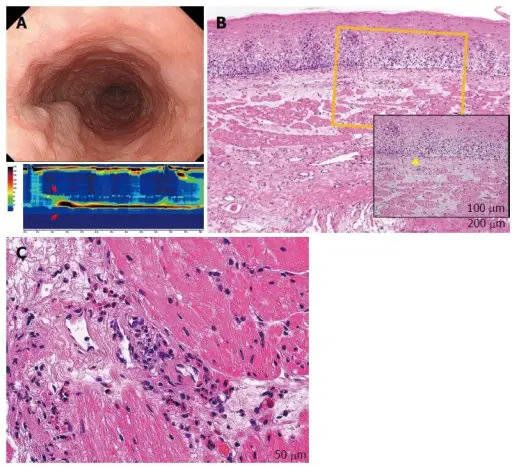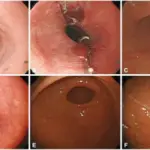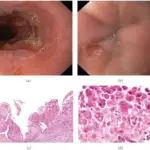Eosinophilic esophagitis is a chronic immune system disease in which a type of white blood cell eosinophil builds up in the lining of the tube that connects your mouth to your stomach esophagus.
What is the Pathology of Eosinophilic Esophagitis?
The pathology of eosinophilic esophagitis is:
-Etiology: The cause of eosinophilic esophagitis by the presence of a large number of eosinophils in the esophagus. The production and accumulation of eosinophils may be caused by many factors such as immune hypersensitivity responses to particular foods or environmental proteins allergens in some affected individuals.
-Genes involved: TSLP, IL-33.
-Pathogenesis: The sequence of events that lead to eosinophilic esophagitis are incompletely understood but involves genetic, environmental, and host immune system factors. Molecular analysis has elucidated that eosinophilic esophagitis is caused by a primary defect in esophageal epithelial function, rather than an eosinophil defect.
-Histology: The histology associated with eosinophilic esophagitis shows a chronic relapsing antigen-driven disease, is associated with characteristic esophageal histopathology, including ≥15 intraepithelial eosinophils in at least one high-power field HPF, and alterations in the epithelium and subepithelial connective tissue.
How does Eosinophilic Esophagitis Present?
Patients with eosinophilic esophagitis typically 3–4 times more common in males than female present at age younger than 5 years old. The symptoms, features, and clinical findings associated with eosinophilic esophagitis include difficulty swallowing dysphagia, food getting stuck in the esophagus after swallowing, and chest pain.
How is Eosinophilic Esophagitis Diagnosed?
Eosinophilic esophagitis is diagnosed by upper endoscopy, and biopsy.
How is Eosinophilic Esophagitis Treated?
Eosinophilic esophagitis is treated by dietary therapy, proton pump inhibitors.
What is the Prognosis of Eosinophilic Esophagitis?
The prognosis of eosinophilic esophagitis is good.



